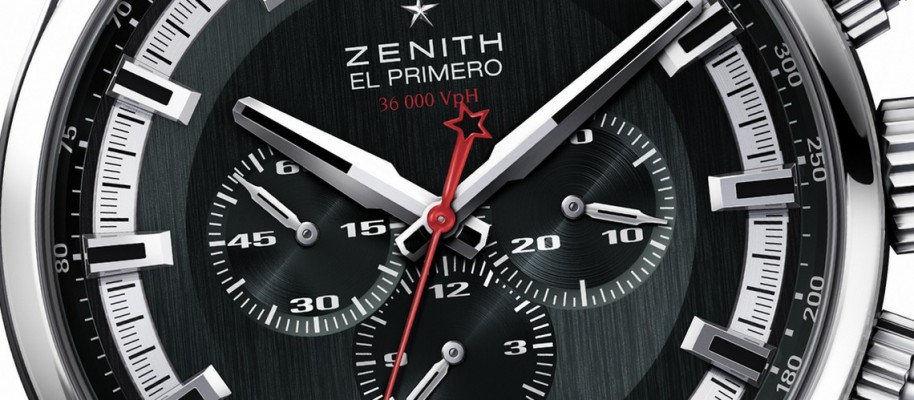By Meor Amri Meor Ayob
Zenith’s famed El Primero line of chronographs marks a very important milestone in the world of horology. It was in 1969, when the El Primero was introduced with its unique caliber that made it to be the first ever automatic chronograph. The original 1969 El Primero was 38 mm in diameter but has since grown to 42 mm in diameter in newer versions. For Baselworld 2015, Zenith came out with a new offering in a bigger case of 45 mm in diameter and a thickness of 14 mm.
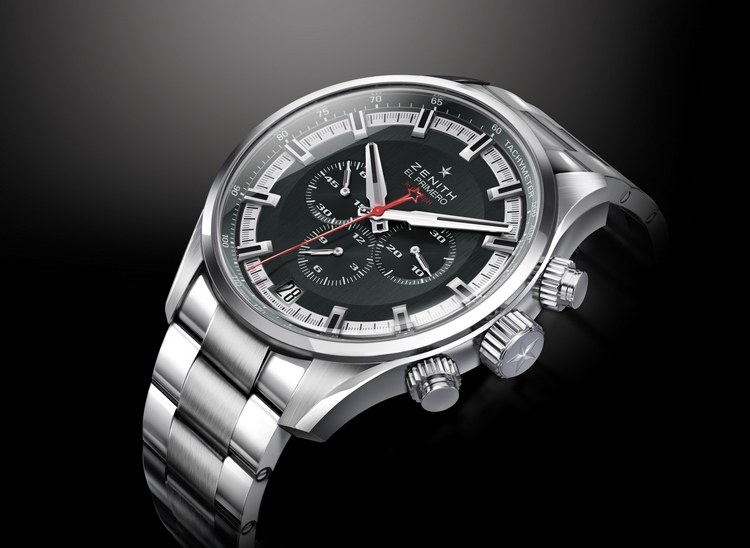
The choice of a 45 mm case fascinates me. Under Zenith’s extreme sports watch sub-series such as the Stratos, 45 mm watch casing is the norm. However, the size of the dial on those watches does not run far from the original 1969 model because most of the additional width is taken up by the presence of a rotating bezel.
This new model has the opposite effect. The bulk of the additional width is used to enlarge the dial and this makes the watch much more impressive. The information on the dial is now much easier to see compared to the original.
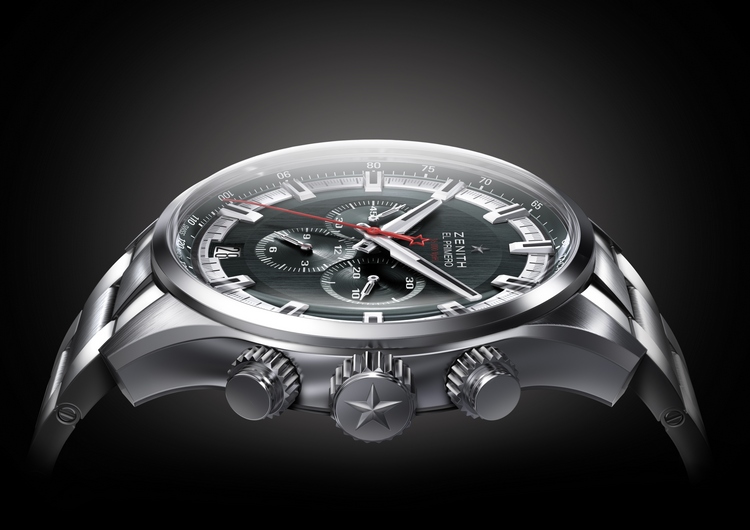
Physically, apart from size, some of the more obvious changes compared to the original version are the use of screw down crowns and pushers. The hands and markers are also larger than the original. Apart from these key changes, the rest, such as the set-up of the sub-dials as well as the various scales around the dial remains true to the original. Unfortunately, the now iconic grey, black and blue sub-dials are no longer available. I bet Zenith will get a lot of feedback about this. If the push from fans is strong enough, Zenith will release a model with the original colors (I hope!).
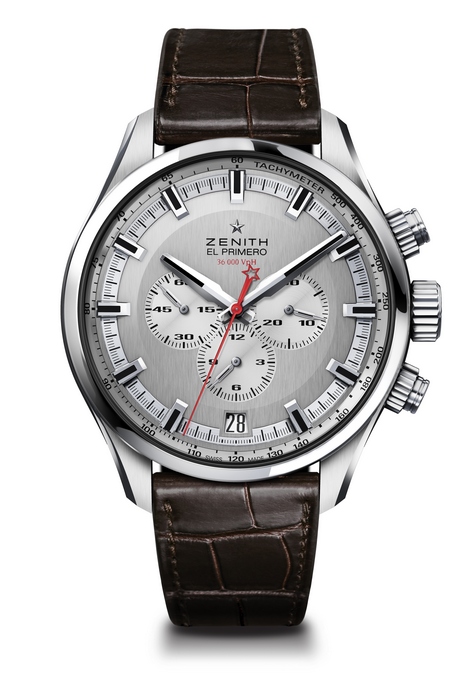
There are two dial options for the El Primero Sport. It is either the slate grey or silver-toned dial with a vertically-brushed finish. My personal pick is the slate grey although in photographs, it looks more seaweed green. Based on news reports, you can have the option of three different types of band; a metal bracelet, a rubber strap or a leather strap. If this is true, there is a possible permutation of six different combinations. Meanwhile, the metal used on the various variants is stainless steel. If given a choice, I will take the slate grey dial with bracelet combination.
The dial is protected by a domed sapphire crystal with anti-reflective coating. The El Primero Sport also comes with a display case-back also made out of sapphire crystal. Through the display case-back you can see the El Primero 400B caliber. This caliber operates at a high beat rate of 5 Hz or 10 beats per second or 36,000 vibrations per hour that allows a 1/10th of a second precision. It has a 50 hour power reserve and uses 31 jewels. Apart from the chronograph complication, this caliber also operates a date function in a window at the 6 o’clock position just like the original.
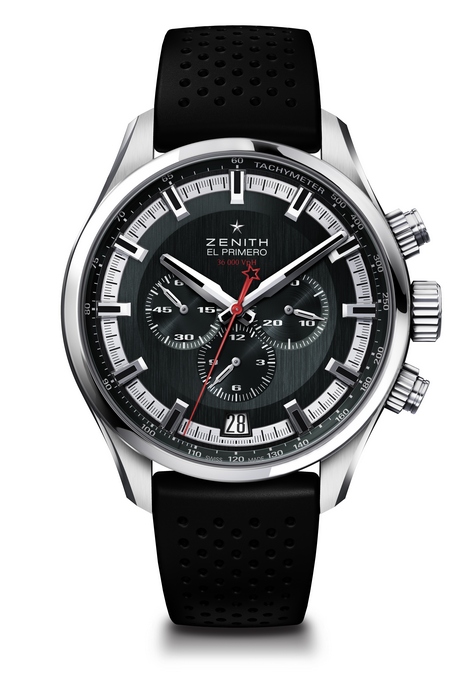
The bulkier shape and the screw down crowns and pushers allow the watch to be water rated to 20 ATM or 200 meters. It is therefore appropriate that this model be designated as a “Sport” model. The ability of this particular model to take more punishment puts it in a market that is growing in interest. There are more buyers of sports model now then ever before and watch brands with strong presence in this major sub-market have been reporting brisk sales. I guess the subtle ‘rebranding’ of the El Primero is to tap into this lucrative category.
Honest be told, before this, I was more inclined to the Stratos series but now, I hooked to this new rendition. For more info, please visit zenith-watches.com

Meor Amri Meor Ayob – Contributing Editor
Meor Amri is a passionate watch collector from Kuala Lumpur, Malaysia. Having bitten by the horology bug in 2010, he has written extensively about the watch scene and has assembled a large collection of watches (excessively!!!) on his own free time. His blogs on the same subject are: Eastern Watch & Western Watch Read his articles here.

